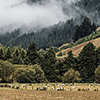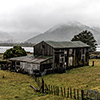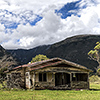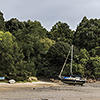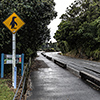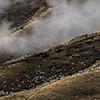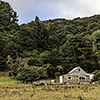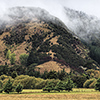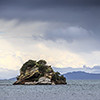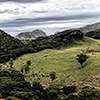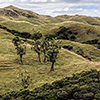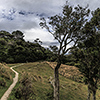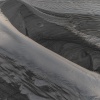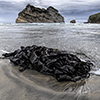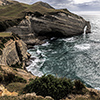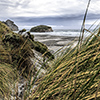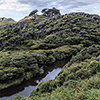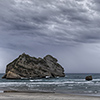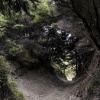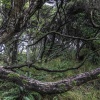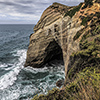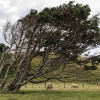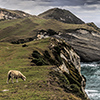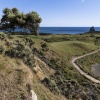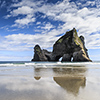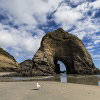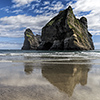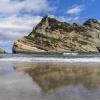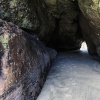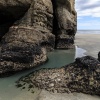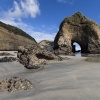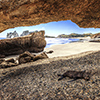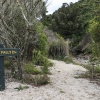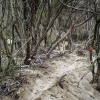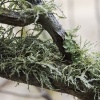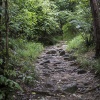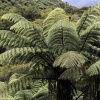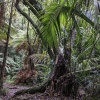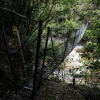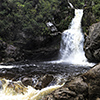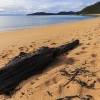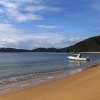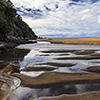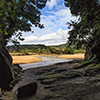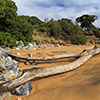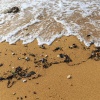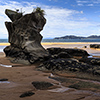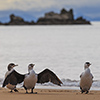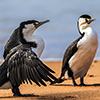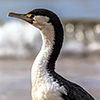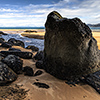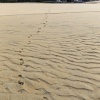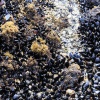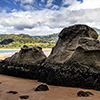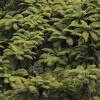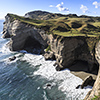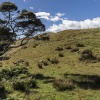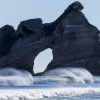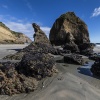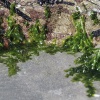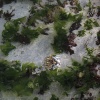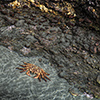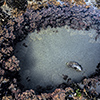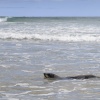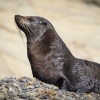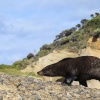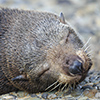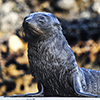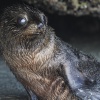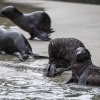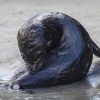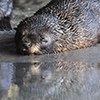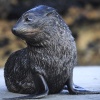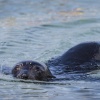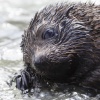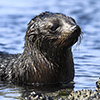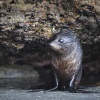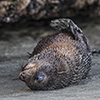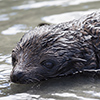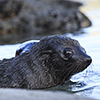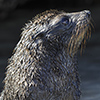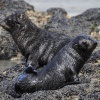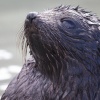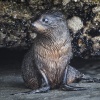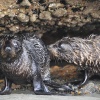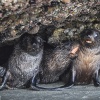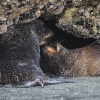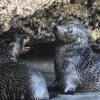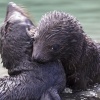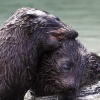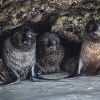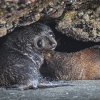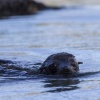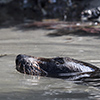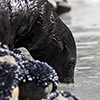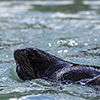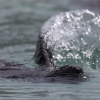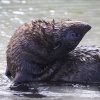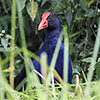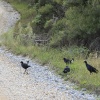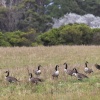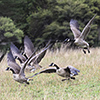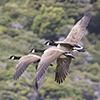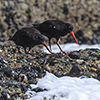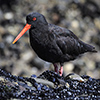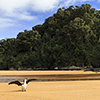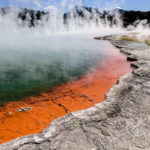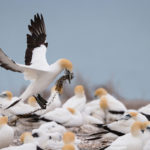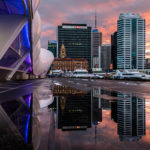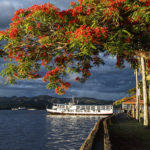Abel Tasman National Park – Seal Puppy Playground with Dutch Roots
When it comes to discovering New Zealand there is no question that James Cook played the most important role, but it was the sailor Abel Tasman from Dutch East India Company who spotted the archipelago being located in South Pacific Ocean as first European ever and even some 100 years earlier than the Brit did. For eternity Tasman’s surname now captions an island, a sea but also New Zealand’s smallest national park. The latter is located on the north coast of the South Island and is a Garden of Eden for all things called flora and fauna. This pearl among Kiwi Land’s refugiums gets completed by its immediate vicinity, the Cape Farewell and the beaches of the Golden Bay. Each of those places belong to the sites a New Zealand visitor should have seen with one’s own eyes.
In four weeks spent on New Zealand I had only one day of rain. That is today, and since the bad weather thwarted the plans I had for Kaikoura my gut feeling says to skip whale watching and to travel on. Hence I am driving, driving, driving wherever the road takes me. My way ends at the north-western end of New Zealand, some 400km from the place where I started. Actually for us Europeans that is not so far, but since the road literally wriggles between Picton and Nelson that trip lasts a complete day.
While the mountain slopes near Picton play Ping-Pong with the low hanging clouds, the sky around Nelson is deep blue. Over here the sun literally blazes and getting sunburn would be no surprise. In a serpentine behind Havelock two trucks and a sports car stand by the roadside. Latter one is now pretty much damaged and looked nicer when he overtook me like a maniac some three-quarters of an hour ago. State Highway 60 is full of pitfalls, meaning serpentines and blind corners. Driving between all those trucks is no big fun.
Having barely left the mountains behind and the coast in sight again, that is having arrived Nelson, all things called traffic get even worse. The morning mess on Berlin’s city highway is nothing compared to what happens here at noon. And something pretty much eye-catching is that in every car there is only one person; and they are no tourists. Nelson might have the most hours of sunshine but I don’t fancy making a stop in such a traffic-wise bone and flint mill.
Fortunately behind Nelson traffic calms down and at the latest when having arrived Motueka things become authentic and rural. Together with Takaka that village is the gate to Abel Tasman national park. It is unbelievable how within a few kilometres only things can change that drastically, meaning from restlessness to being through and through relaxed. Over here you can finally enjoy what that most sun-kissed area of the South Island is known for: being a prime example for fruit- and wine-growing.
It is late afternoon already but somehow my journey leads magnetically to Cape Farewell, the northernmost spot on New Zealand’s South Island where the Tasman Sea starts to mingle with the Pacific Ocean. Meanwhile the clouds caught up with me and the sky above Wharariki beach is a battle field between the thunderstorm-like rain clouds coming from the sea and the ever blazing sun. Wharariki beach has a wonderful vibe even though the weather is not the best.
In the end the sun lost that battle and in the night eagerly awaited rain drops drum on the roof of my caravan. In northern South New Zealand earth is not that much burnt like elsewhere, but also here the summer of 2013 is pretty hot causing quite some rain shortage.
The drizzle falling from the sky completes the short trip to Wanui Falls as you feel like Indiana Jones himself in the tropics, caught in dense jungle, hiking through the fields whilst crossing rivers by tiny suspension bridges. Yeah!
The sediment carried by Wanui River colours the water brownish and rather remembers of chemistry lessons at school than of refreshing H2O. The drizzle plus the spray of the river water being in turmoil makes the plants and trees around looking pretty much fresh and green, but also it makes the path leading to where the water plunges 10 metres deep being a quite slippery story.
Having arrived the waterfall the weather changes and first sunbeams break through the clouds as well as through the canopy of leaves. How the coast might look like now…? That question as well as the strength gaining sun mobilise me and my curiosity and I follow the road leading northwards to Totaranui, where a wonderful beach invites to explore the shore.
The sand of Totaranui beach looks wonderfully golden and is actually way much more golden than the Golden Bay could ever be. In particular the northern part of Totaranui beach looks wonderful as over there washed out rocks start to dominate the maritime scenery. Around those rocks a small rivers meanders towards the Tasman Sea and when the play of the sun starts to add light and shadow to the rock shapes then the whole place becomes an eye candy par excellence.
The dunes in front of Totaranui beach are an ideal runway for all kinds of seabirds and it looks like the tower just gave clearance to some cormorants as they approach Totaranui like on a string. It seems like they came back from hunting fish offshore since right after landing they spread their wings to take a sunbath and make them dry again. The Maori call them Kawau. Normally those birds escape already when they scarcely spot a human, but I may come pretty close. They allow me to take a few close-up photos.
One can wonderfully discover Abel Tasman national park on foot or by kayak. Latter way logically leads you automatically along the shoreline and unveils the maritime fauna treasures of South New Zealand and it is virtually impossible not to meet sea lions. If you are lucky then you even meet its offspring, that will make your heart melt away like ice cream in the sun as they are adorably cute. I met eight of them playing in front of a small cave having a little pool being separated from the open sea in front.
Being allowed to watch that little gang of rascals cavorting and playing with each other was an emotional as well as an optical delight and within the blink of an eye half a day was gone. Their big saucer eyes and lust for life conquer your hear immediately.
Some of the sea lion puppies were not older than 2-3 months, but even at that early stage they could swim as if they wouldn’t have done anything else in life. They played as if there is no tomorrow; dived under my boat, swam supine cooler and more relaxed than Fonzie, then dived again and speeded up by hook or by crook to jump out the water like dolphins.
It is no surprise that in view of such a bunch of funny little guys the camera had to do overtime and the memory cards ran out of capacity. The small ones are super cute but sea lions are also only humans, meaning the older ones can become pretty grumpy. Sometimes adult sea lions let you come very close, so close that you can even take wide angle photos.
Though, sometimes those animals already feel uncomfortable when you’re 200 metres away and start to attack you for the sake of defending themselves or their area. When that happens then you better back out as escalating the situation would probably lead to making the acquaintance of their strong jaws and sharp teeth; always remember that those jaws can easily crack crustaceans. Even the small puppies are able to bite off a human finger.
To the west of of Abel Tasman you can find South New Zealand’s northernmost spot, that is Cape Farewell, where the Tasman Sea starts to mingle with the Pacific Ocean. The area is dominated by rugged rocks made of lime stone or pretty firm sand stone. Latter one got constantly shaped and eroded by wind as well as waves and are now not solid stones anymore but beautiful natural arches. Cape Farewell as well as neighbouring Wharariki Beach are full of them and they look best when mirroring in the water of a wave flowing back into the sea.

